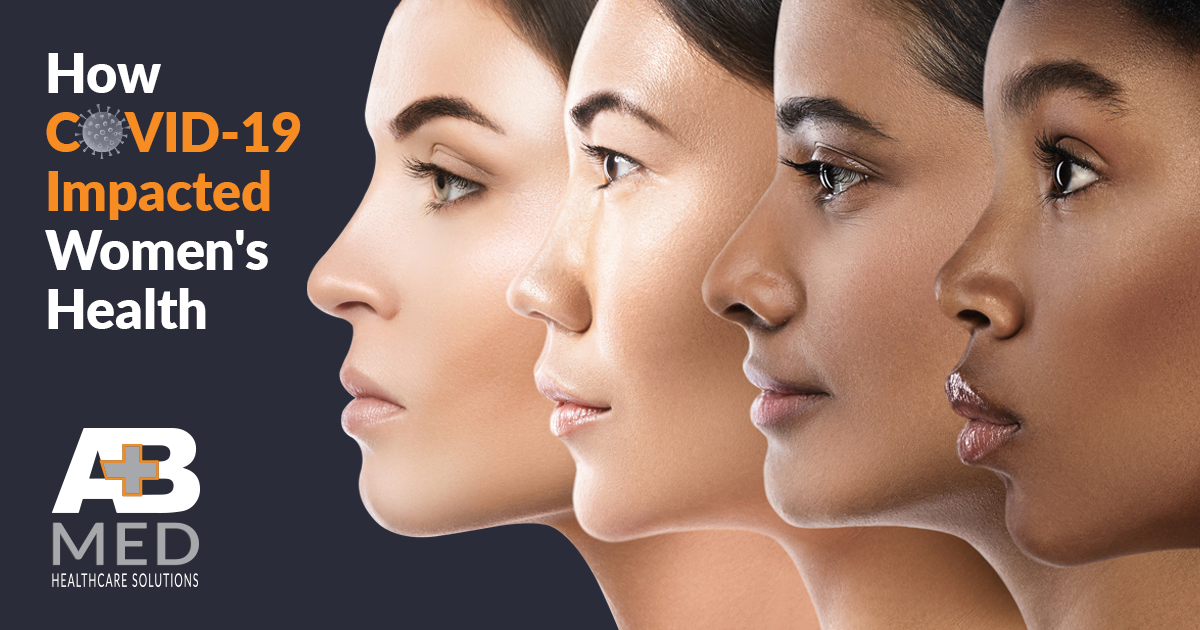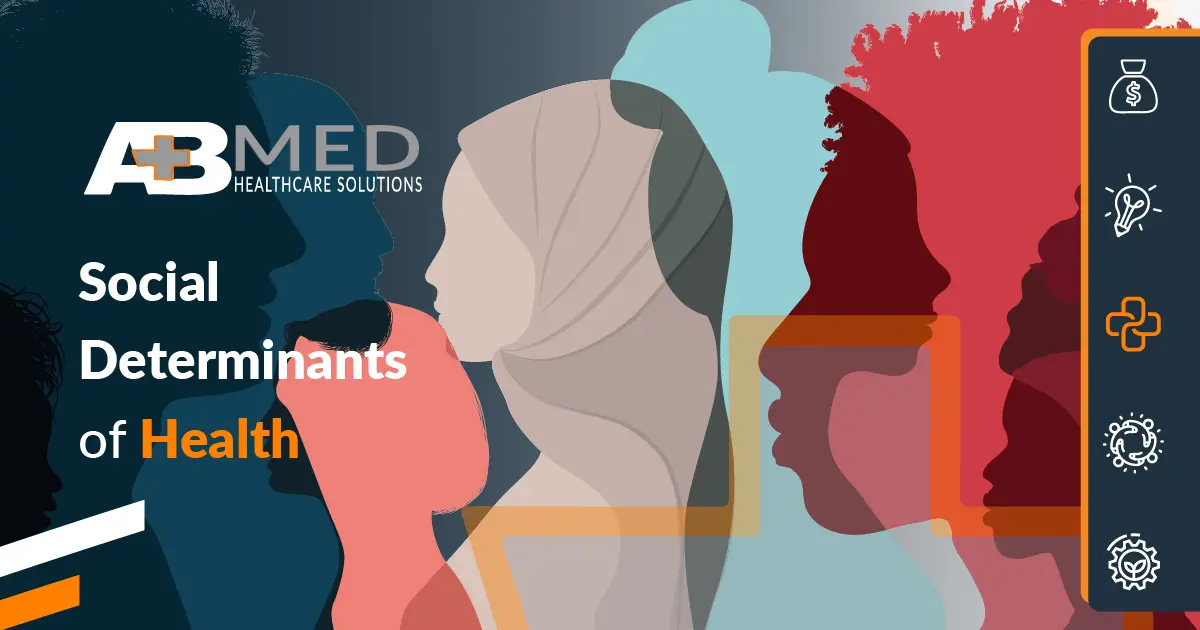In 2021, women’s health is a public health priority. While the pandemic continues to push our public health system to the limit, the disparities in health access for women cannot be ignored.
Women make up 75% of all unpaid caregivers to the aging population and minors and often serve in multiple roles as the primary caregivers. As women have a longer life expectancy, they tend to live longer with chronic diseases. The COVID-19 impact magnified an existing imbalance in the US and was felt most by women who concurrently face challenges such as poverty, housing insecurity, and racism.
Here, we’ll address three key ways in which the COVID-19 crisis has affected women’s health along with some potential mitigations for healthcare leaders to affect positive change.
Women’s Mental Health
Whether for children or aging parents, women are often responsible for providing care for others, without prioritizing care for their own health. Skipping essential health care services during the pandemic could mean higher numbers of women experiencing worsening health issues in the coming months/years.
Public health measures such as social distancing meant to mitigate the spread can augment feelings of isolation leading to increased stress. Stress can cause other health conditions including difficulty concentrating, making decisions, and physical reactions like headaches and stomach problems. Added stress leads to an increased likelihood of tobacco, alcohol and other substance use and misuse. With increased stress, patients report difficulty sleeping, along with nightmares.
Positive leadership measures to help people cope with stress include campaigns to manage stress, with specific positive behavioral insights to improve her nutrition, exercise, and sleep with education. Providing resources, numbers and information about organizations for various support lifelines are proven strategies for health leaders to affect change. Another way to support women is by providing information for securing financial support, including local charities offering assistance with consistency.
According to the WHO[i], women face more than their fair share of common mental health disorders, including depression, anxiety and insomnia. Depression is twice as common in women than men and is considered to be the second leading cause of the global disability burden in 2020. The need for broadened access to mental health care is especially prominent for women.
Research
shows that there are three main factors which are highly protective against the development of mental health issues, especially in regards to depression. [ii] These are:
- Having the autonomy to respond to severe events.
- Having access to material and financial resources that allow the possibility of making choices in the face of severe events.
- Having the emotional support from family, friends, or health providers.
COVID-19 Complicates Health Issues Specific to Women
Certain diseases and health issues present exclusively in women, such as ovarian and cervical cancer. Other diseases such as breast cancer, depression, arthritis, and osteoporosis affect women disproportionately. With decreased access to healthcare during the pandemic coupled with an increased anxiety regarding risk of exposure, preliminary patient surveys suggest that many women opted to go without care and necessary medications during the pandemic.
The pandemic complicated matters for women in labor and delivery as well. In an effort to slow the spread, most healthcare facilities imposed strict visitor limitations to one essential support person, who had to be the same person throughout the mother and baby’s hospitalization. This control measure is sure to have had an effect on a significant life event for many women, notably for first-time mothers.
The CDC reports that they are still working to understand the full extent of the impact of COVID-19 on pregnant women and infants. Based on what is known presently, pregnant women do face an increased risk for severe illness from COVID-19 and may have increased risk of adverse pregnancy outcomes including preterm birth. In fact, the COVID-19 crisis is not the first pandemic to have affected a woman’s access to the healthcare system, especially to preventative and reproductive healthcare. Outcomes from both the SARS and the Ebola outbreak were consistent with these trends as well.

Racial and Economic Barriers Compound Access to Healthcare for Women
Gender, as it interacts with a person’s socioeconomic status, influences the power and control one has over their overall health and life. Each of these factors determine a woman’s exposure to specific health risks. Due to a tendency of earning lower incomes, higher rates of insufficient insurance or the absence of insurance and overactive schedules, women experience more difficulty accessing the health system.
In one way, the COVID-19 pandemic restored access with the healthcare industry quickly adopting telehealth. As a result of the American Care Plan Act this year, many impoverished areas will be equipped with broadband infrastructure. Many enterprise and medical IoT companies in the US are working to launch ideas[iii] for minimizing health inequities using technology. healthcare organizations who are serious about men’s health care have to be proactive in working with stakeholders and public health offices in their communities to end stigma around men’s mental health, increase access to care, and encourage open conversation about mental health.
Efforts to ease the pressure of COVID-19
As 2020 has taught us, pandemics have the ability to weaken societal institutions and systems just as the virus weakens the body. To strengthen our response to the disparities that still need our attention concerning women’s health, an immediate response should be ensured to account for gender considerations. Providers should be prepared to address the forthcoming mental and emotional issues due to the ramifications of COVID-19.
Although mitigations by federal and health organizations for preparedness planning and relief are ongoing, there are very few articles and commentary on the subject, to date. As the aftereffects are still evolving, more research into the data is needed. In any case, efforts to ease the pressure that COVID-19 caused must be inclusive of gender disparities to effectively support half of the human population.
As healthcare leaders, we can work to ensure that all people know of and have the resources to maintain and manage their physical and mental health. This includes easy access to information and affordable medical care. We need programs and practices that serve the communities where people live, learn, and work. Confirming fair access to quality, low-cost programs and services for education, housing, transportation, childcare, and healthcare must be concerned. Together, we can improve a women’s quality of life in our country and protect all communities and their opportunities to thrive. Let’s Connect.
REFERENCES & RESOURCES
- www.who.int. (2020). Gender and women’s mental health. [online] Available at: https://www.who.int/teams/mental-health-and-substance-use/gender-and-women-s-mental-health.
- Centers for Disease Control and Prevention (2020). Coping with stress. [online] Centers for Disease Control and Prevention. Available at: https://www.cdc.gov/coronavirus/2019-ncov/daily-life-coping/managing-stress-anxiety.html.
- www.beckershospitalreview.com. (n.d.). Henry Ford, Google want bright ideas for reducing health inequities with tech: 6 details. [online] Available at: https://www.beckershospitalreview.com/digital-transformation/henry-ford-health-system-google-cloud-to-launch-health-inequality-innovation-competition-6-details.html [Accessed 10 May 2021].
- Connor, J., Madhavan, S., Mokashi, M., Amanuel, H., Johnson, N.R., Pace, L.E. and Bartz, D. (2020). Health risks and outcomes that disproportionately affect women during the Covid-19 pandemic: A review. Social Science & Medicine, 266, p.113364.
- www.acog.org. (n.d.). Coronavirus (COVID-19) and Women’s Health Care: A Message for Patients. [online] Available at: https://www.acog.org/womens-health/faqs/coronavirus-covid-19-and-womens-health-care [Accessed 7 May 2021].
- Miller, M.J. (2021). Impact of COVID-19 on Cervical Cancer Screening Rates Among Women Aged 21–65 Years in a Large Integrated Health Care System — Southern California, January 1–September 30, 2019, and January 1–September 30, 2020. MMWR. Morbidity and Mortality Weekly Report, [online] 70. Available at: https://www.cdc.gov/mmwr/volumes/70/wr/mm7004a1.htm?s_cid=mm7004a1_w [Accessed 1 Feb. 2021].
- CDC (2020). Coronavirus Disease 2019 (COVID-19). [online] Centers for Disease Control and Prevention. Available at: https://www.cdc.gov/coronavirus/2019-ncov/cases-updates/special-populations/pregnancy-data-on-covid-19/what-cdc-is-doing.html.
By: Erik McLaughlin MD, MPH and Aikaterini Papadopoulou, B.Arch






